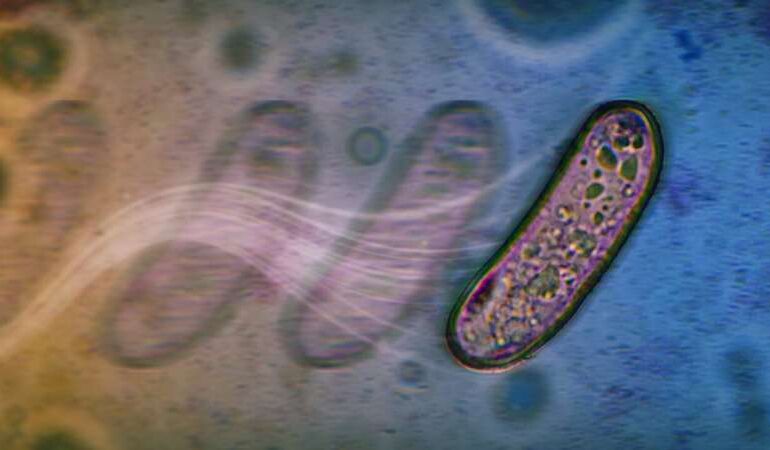Bacteria Unveil Unique Movement Strategies Without Flagella

Recent studies from Arizona State University have unveiled significant findings about bacterial movement, revealing that certain bacteria can navigate without their typical flagella. This discovery has implications for understanding how harmful microbes can spread in various environments, including medical settings and food processing areas.
In research led by Navish Wadhwa, scientists demonstrated that both salmonella and E. coli can traverse moist surfaces despite having their flagella disabled. The researchers observed that these bacteria utilize a process they named “swashing,” where they ferment sugars and generate tiny outward currents on the surface. These currents propel the bacteria forward, akin to leaves floating on a gentle stream. The findings were published in the Journal of Bacteriology and selected as an Editor’s Pick, highlighting the study’s importance.
Understanding this movement could be crucial for developing new strategies to combat bacterial infections. Wadhwa noted, “We were amazed by the ability of these bacteria to migrate across surfaces without functional flagella. Originally, we expected that without their flagella, the cells would not move.” Instead, the bacteria exhibited remarkable mobility, prompting a deeper investigation into their mechanisms.
Swashing: A New Form of Movement
The bacteria’s ability to move relies on the fermentation of sugars such as glucose and maltose, which produce acidic by-products like acetate and formate. These by-products draw water from the surface, generating currents that enable the bacteria to move outward. The researchers found that this movement is dependent on the presence of fermentable sugars, indicating that environments rich in these substances—such as mucus in the human body—could facilitate the spread of harmful bacteria.
When surfactants were introduced to the bacterial colonies, the swashing movement ceased, suggesting that swashing and the traditional swarming method—which relies on flagella—employ different physical mechanisms. This distinction could lead to targeted methods for managing bacterial movement in various settings.
The implications for human health are significant. Bacteria like E. coli and salmonella, known for causing foodborne illnesses, may exploit swashing to colonize medical devices, implants, and other surfaces. Traditional strategies that focus solely on blocking flagella may not be sufficient. Instead, disrupting the chemical processes facilitating this movement could prove more effective.
Understanding Molecular Mechanisms
In a separate study led by Abhishek Shrivastava, researchers examined how flavobacteria navigate surfaces using a molecular system known as the type 9 secretion system (T9SS). Unlike E. coli, which swims using flagella, flavobacteria glide along surfaces using a conveyor-belt-like mechanism. The study revealed that a specific protein, GldJ, acts as a gear-shifter, allowing the bacteria to control their movement direction.
The research emphasizes how bacteria can fine-tune their motility, providing them with an evolutionary advantage in navigating complex environments. The T9SS system has dual implications for health, as it can play harmful roles in conditions like gum disease while also contributing positively to gut health by enhancing immunity.
Shrivastava expressed enthusiasm over the findings, stating, “We are excited to have discovered an extraordinary dual-role nanogear system that integrates a feedback mechanism, revealing a controllable biological snowmobile.” This discovery is poised to inform strategies to prevent biofilm formation—communities of bacteria that can lead to infections and contaminate medical devices.
The insights from these studies highlight the necessity for innovative approaches to combat bacterial diseases. Traditional methods have often concentrated on targeting flagella, but these findings suggest that attention must also be given to environmental factors such as sugar levels, pH, and surface chemistry. By understanding and potentially disrupting key molecular machines like the T9SS gearbox, researchers could develop new treatments that mitigate bacterial movement and secretion of harmful proteins.
The studies underscore the complexity of bacterial movement and the adaptability of these microorganisms. As researchers continue to explore their mechanisms, the potential for new therapeutic technologies and bioengineered solutions may emerge, contributing to better health outcomes and infection control.






